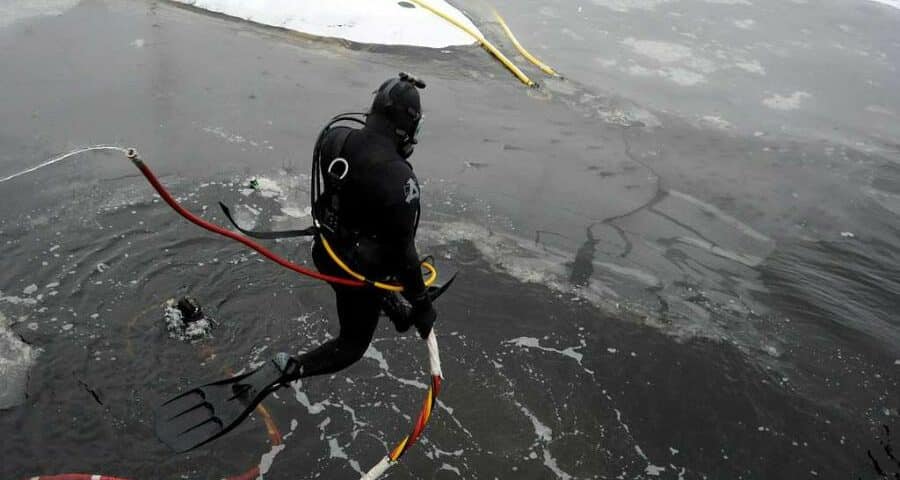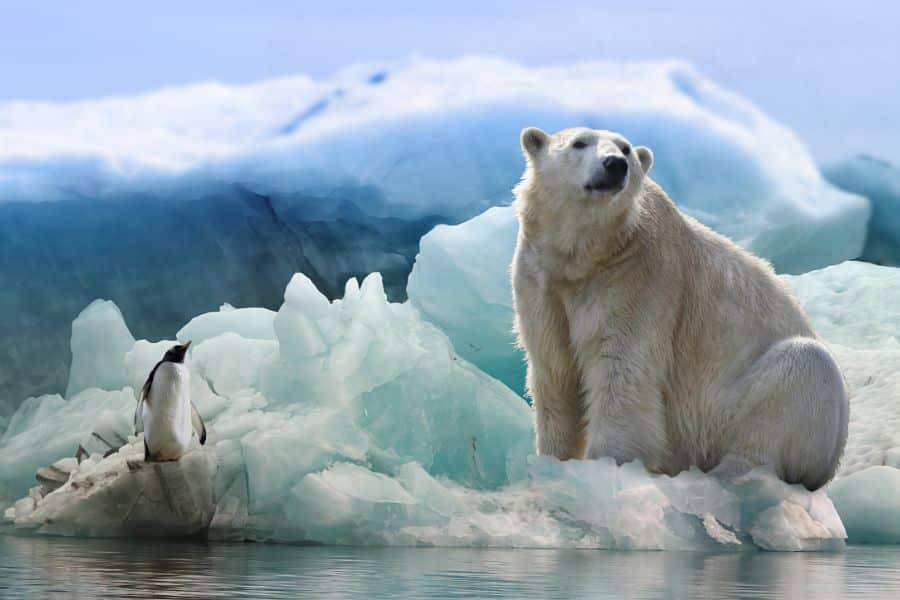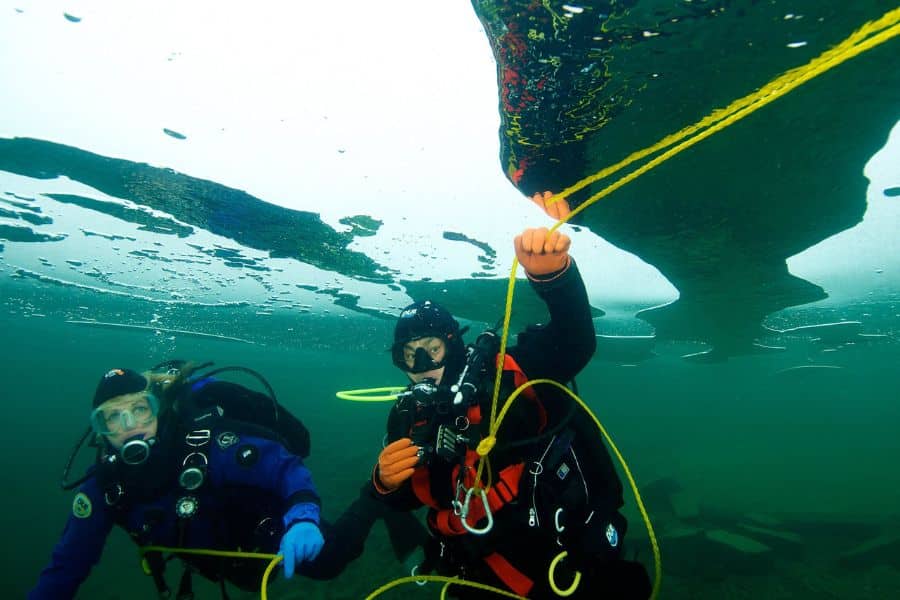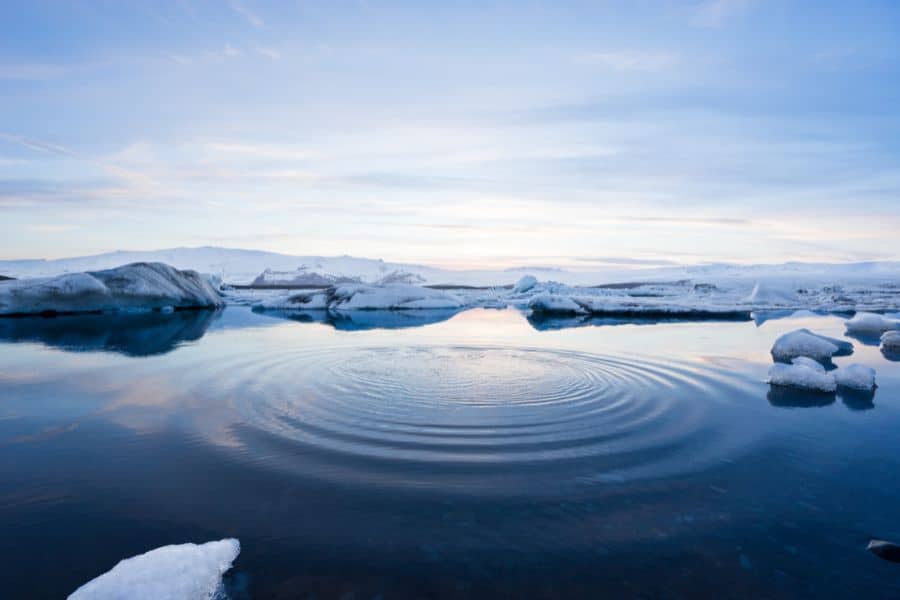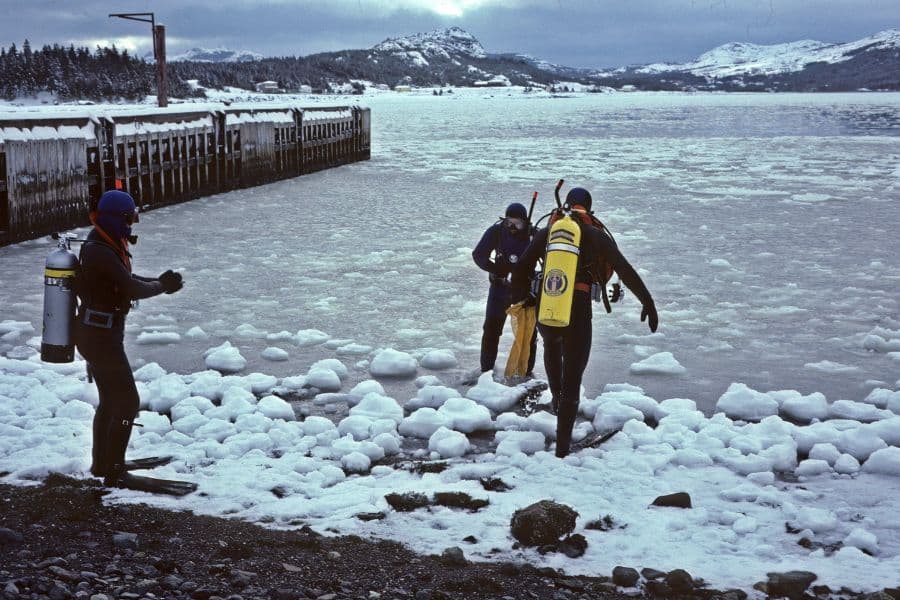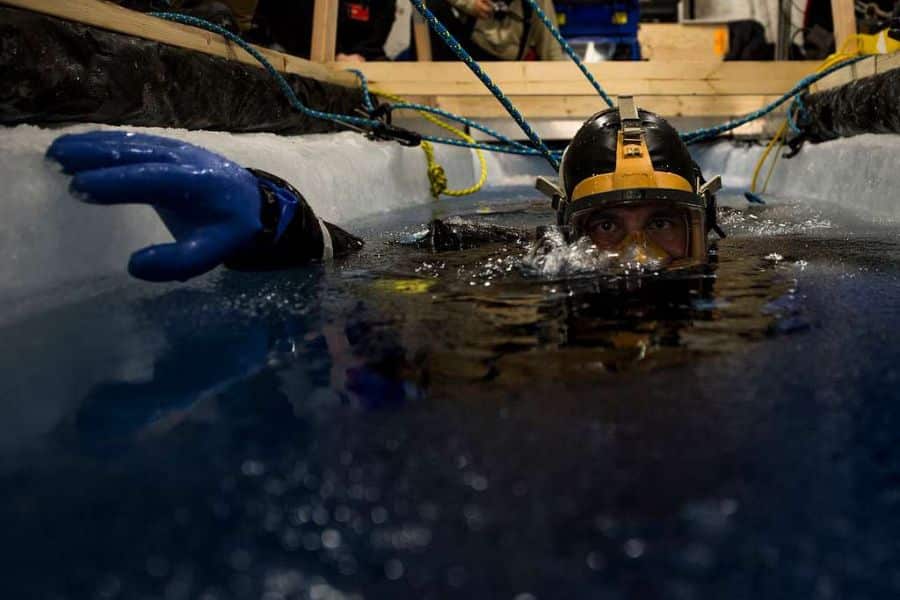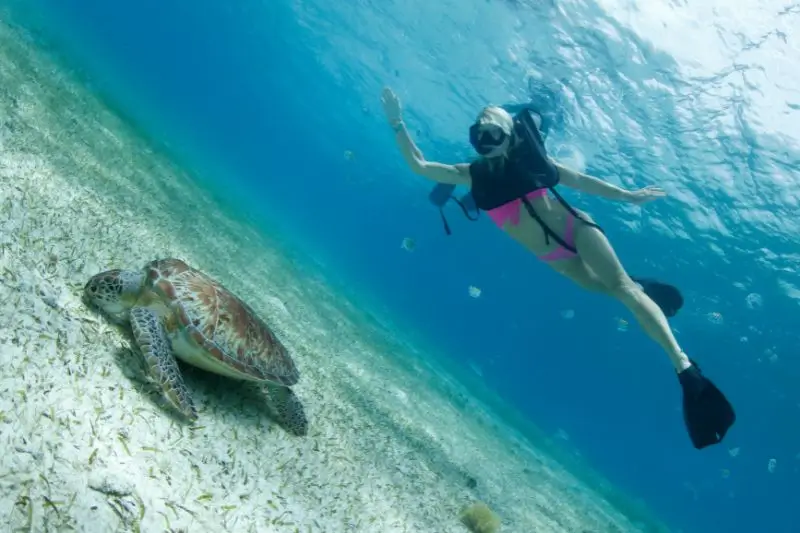1. What is Polar Diving? Stories from Polar Divers
Caribbean Diving Enthusiasts! Are you ready for a radically different adventure?
Down there, it’s so cold that your face, the only part that touches the water, goes numb. It’s not a silent world; the ice cracks, groans, moves, and creaks. The ice melts above and below you. Chunks break off and rise, trapped debris falls, birds dive to catch their food, and there you are, diving at the pole wrapped in layers of clothing. By the way, putting on the diving suits takes an hour.
Diving at the pole isn’t something you can do half-heartedly or just to give it a try, because this type of diving is very demanding.
1.1. When is the Polar Diving Season?
And that’s considering that the polar diving season is in summer, when the sun shines all day. Depending on which pole you choose, the season aligns with different months. July and August offer the best conditions for diving in the Arctic (North Pole), although the season opens in May and ends in September. Surface temperatures range between 5 and 15°C (41 to 59°F).
As for the diving season in Antarctica, the window is open from November to March, with December and January being the best months. You can expect surface temperatures to range from -5 to 8°C (23 to 46°F).
1.2. What is the Water Temperature at the Poles?
At the North Pole, the water is currently at -1°C (30°F). In Antarctica, the temperature can be even lower in the worst-case scenario. These waters are much, much colder than the Caribbean Sea, which doesn’t drop below 26°C (78.8°F). You see, diving at the poles means diving below the freezing point of freshwater, which freezes at zero degrees. But this is the ocean—saltwater. Moreover, it turns out that underneath, there’s a lush garden full of life.
1.3. What is the Average Visibility at the Poles?
At the poles, nature rules. The frozen waters are completely transparent, but when it gets warmer, plankton proliferates, which clouds the water. Additionally, we are at the pole, it’s no secret, the weather there is bad. The currents, tides, and waves can make visibility worse.
1.4. Diving in the Arctic or Antarctica?
Marine life varies between the two poles.
Diving in the Arctic offers the chance to see harp, bearded, and ringed seals. Imposing walruses with their tusks will greet you from the ocean floor. Additionally, belugas, narwhals, and even humpback whales will welcome you to their icy world.
On the other hand, the animals you’ll see while diving in Antarctica include emperor, gentoo, Adélie, and chinstrap penguins gracefully gliding under the ice, or leopard, fur, and Weddell seals lurking in the darkness for their prey.
You might also spot sea lions playing among the rocks and humpback whales singing their underwater melodies (along with 15 other whale species).
Some shipwrecks have been found in the Arctic, mainly 19th and early 20th-century whaling and sealing ships. These wrecks are often in shallow waters, near the coast, or on islands. The “Standard” wreck in Iceland can be explored.
Wrecks in Antarctica are even rarer due to the lesser maritime activity in the region. However, a few have been discovered, such as the Guvernøren, a semi-submerged wreck near Enterprise Island. It was a Norwegian factory ship intentionally grounded after catching fire in 1915.
But if you’re like me, and everything seems wonderful and desirable, accessibility is a point to consider. There are more tour operators offering diving trips to the Arctic, which might make it easier to plan your dive trip to the North Pole.




